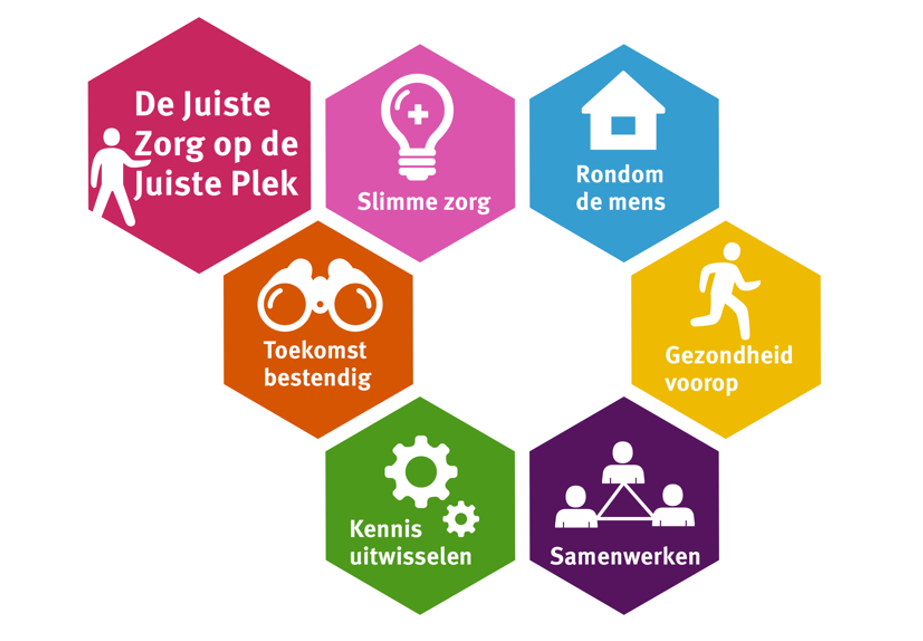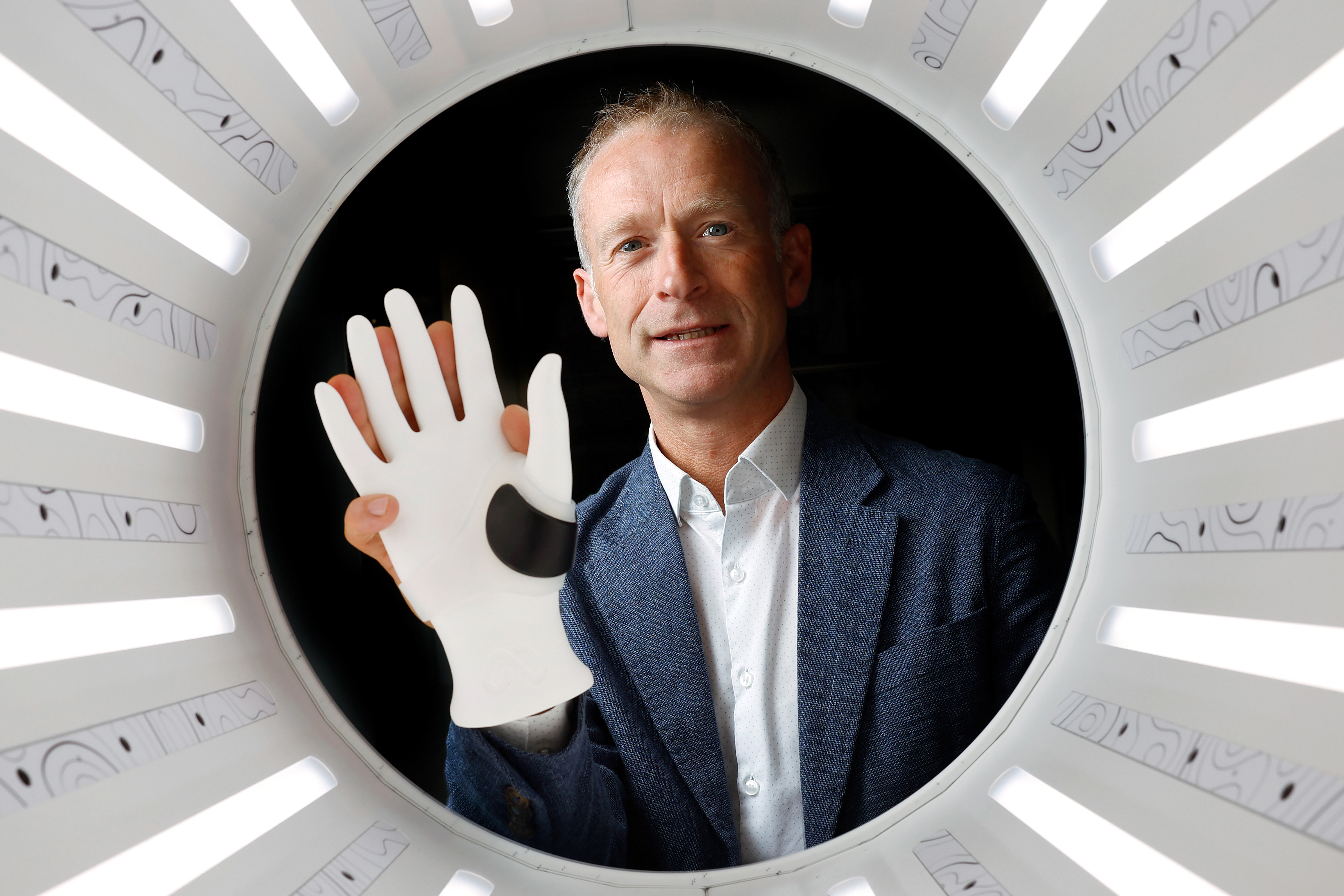Hand Surgeon Gerald Kraan Appointed to New Chair at TU Delft
"We need to break down the wall between cure, care, and work"
The new chair "From Helping Hand to Working Hand" at TU Delft will be led by professor and orthopedic surgeon Prof. Dr. Gerald Kraan. As a hand surgeon affiliated with Reinier de Graaf Hospital and the Reinier Haga Orthopedic Center (RHOC), this appointment gives him the opportunity to further bridge clinical and technical research. “Helping someone return as quickly as possible to what is important to them—whether that’s work, a hobby, or something else—is my main goal!”
This chair is part of the Biomedical Engineering program at TU Delft. Its research focuses on developing innovative healthcare solutions for hand and wrist conditions. Together with patients, engineers, and healthcare professionals, new solutions are designed, developed, and implemented in clinical practice.
What does this appointment mean for you?
“For me, this is a unique opportunity to bring clinical and technical research closer together so we can learn from each other and effectively implement new healthcare concepts. This chair allows me to dedicate more time to this work and better support students and PhD candidates.”
How is it to work as a medical professional at a technical university?
“I’ve been doing this for a few years now, and it’s been great. I’ve learned a lot about what’s possible with technology and discovered how to think more outside the box. I also see differences between medical students and future engineers.
In medicine, students are often taught convergent thinking: starting with a thousand possible diagnoses, narrowing it down to one, and acting from there. At TU Delft, students tend to think divergently: they see a problem and come up with multiple solutions. By combining these approaches, there’s a lot we can learn from each other.”
What do you take back from TU Delft?
“As a medical professional, you’re still trained in a very classical way, following the apprentice-mentor model—a method that’s over 2,000 years old and hasn’t changed much. At TU Delft, the approach is different. Communication, teamwork, and social responsibility are also emphasized. I try to incorporate these elements into orthopedic training to contribute to a more human- and patient-centered approach.”
One goal of the chair is to extend the patient journey from the cure and care domain to the work domain. What does that look like in practice?
“In hospitals, we focus primarily on how long someone is sick and what the healthcare costs are. What’s often missing is attention to absenteeism and socio-economic consequences. The difference between being out of work for six weeks versus six months is enormous. Returning to work sooner might involve a more expensive treatment, but in the bigger picture, it could save money. We don’t consider that enough in healthcare. I believe we need to break down the wall between cure, care, and work.
A good example is our research into treating thumb base osteoarthritis, a common condition affecting about a third of the population. Loss of thumb function can lead to 40% work disability. Currently, treatment focuses mainly on pain relief, often by removing the damaged bone, which requires four to six months of recovery. During that time, patients often cannot work fully. An alternative is a custom thumb prosthesis, which is more expensive but allows patients to return to work within two months. We’re studying the impact of this approach, including its socio-economic effects.”
I’m an artist specializing in portraits. Three years ago, I developed severe pain at the base of my thumb. Holding a palette became very difficult, and I could no longer paint. I tried various braces, but nothing helped. My last brace was made of plaster with a hard edge—it was stiff, sweaty, and impossible to work with. Then I got this new 3D-printed brace. It’s fantastic! It’s flexible, easy to clean (even if paint gets on it), and leaves much of my hand free. I have no pain when wearing it, and if this continues, I won’t need surgery. I’m very happy with this brace!
Quote from a participant in the study
You’ve said, “Listen to the patient—they tell you the diagnosis and often the solution.” Why is this overlooked, and how can it improve?
“In healthcare, we focus heavily on curing patients. What happens around the patient often escapes our notice. A good example is a study on day treatments at Reinier de Graaf Hospital. The information provided seemed adequate, but patients worried about something we hadn’t considered: the numb feeling in their hand after surgery. How long would it last? What should they expect?
For us, as doctors, that wasn’t a major concern, but for patients, it caused a lot of anxiety. By listening better to patients’ experiences and needs, we can identify areas where we can make a difference and adapt care accordingly. This way, we can develop technology and care processes that truly fit into their daily lives and work environments.”
What does "the right care in the right place" mean to you?
“We still provide a lot of hospital care that could be delivered in primary care settings, such as at a general practitioner, physiotherapist, or other paramedical professional. A good example is treating a dislocated finger. Each year, 10,000 people come to emergency departments for this. Currently, these patients are treated in the hospital with casting, bracing, and taping—a process that takes three months of hospital care and is expensive.
We’re running a pilot to see if this can be safely managed by general practitioners or hand therapists. This would make care more accessible for patients and save them travel time. If it’s safe to shift this care to the primary setting, it could save €260 million annually. However, seamless communication between primary and secondary care is essential to ensure no information is lost. That’s the next step we need to take.”
How does technology contribute?
“Technology helps us measure outcomes. In hospitals, we use patient-reported outcome measures (PROMs) to monitor care quality. Patients fill out surveys, and we compare whether procedure A or procedure B performs better. Over time, we can see which approach is superior based on scores, but often we don’t know why.
For example, we compared a 3D-printed brace to a standard brace. While patients preferred the 3D-printed version, both scored the same on pain reduction and satisfaction. Why, then, do they prefer the 3D version? That’s where patient journey mapping comes in—a method used at the Faculty of Industrial Design Engineering. It examines not just the outcome but also the steps in between.”
What’s your dream for your work?
“We’ve set ambitious goals for the chair, such as reducing hospital visits and cutting absenteeism. But as an orthopedic surgeon, my greatest satisfaction comes from seeing a happy patient. Helping someone return as quickly as possible to what’s important to them—whether that’s work, a hobby, or something else—is my ultimate goal!”


